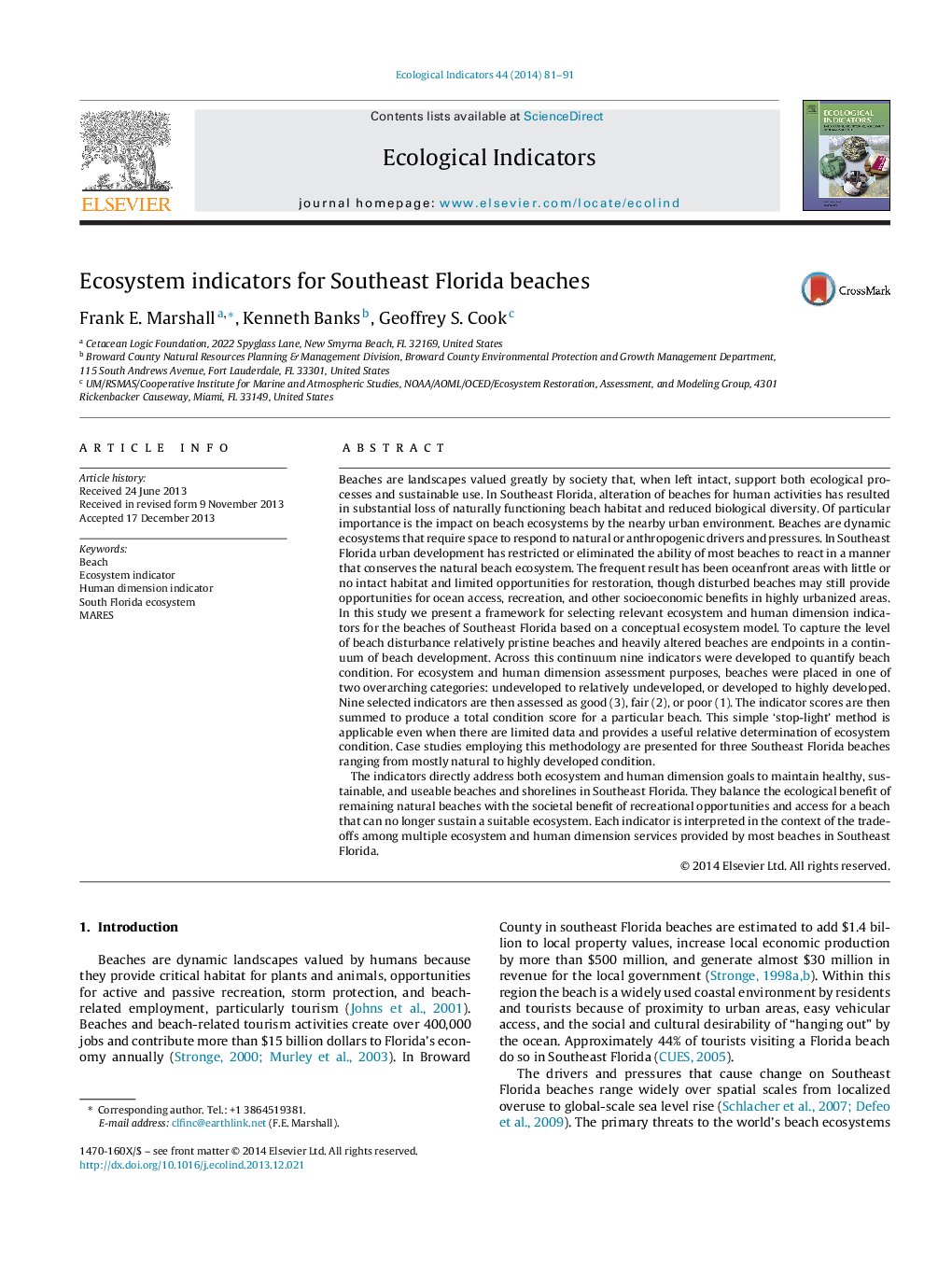| کد مقاله | کد نشریه | سال انتشار | مقاله انگلیسی | نسخه تمام متن |
|---|---|---|---|---|
| 4373127 | 1617157 | 2014 | 11 صفحه PDF | دانلود رایگان |
Beaches are landscapes valued greatly by society that, when left intact, support both ecological processes and sustainable use. In Southeast Florida, alteration of beaches for human activities has resulted in substantial loss of naturally functioning beach habitat and reduced biological diversity. Of particular importance is the impact on beach ecosystems by the nearby urban environment. Beaches are dynamic ecosystems that require space to respond to natural or anthropogenic drivers and pressures. In Southeast Florida urban development has restricted or eliminated the ability of most beaches to react in a manner that conserves the natural beach ecosystem. The frequent result has been oceanfront areas with little or no intact habitat and limited opportunities for restoration, though disturbed beaches may still provide opportunities for ocean access, recreation, and other socioeconomic benefits in highly urbanized areas. In this study we present a framework for selecting relevant ecosystem and human dimension indicators for the beaches of Southeast Florida based on a conceptual ecosystem model. To capture the level of beach disturbance relatively pristine beaches and heavily altered beaches are endpoints in a continuum of beach development. Across this continuum nine indicators were developed to quantify beach condition. For ecosystem and human dimension assessment purposes, beaches were placed in one of two overarching categories: undeveloped to relatively undeveloped, or developed to highly developed. Nine selected indicators are then assessed as good (3), fair (2), or poor (1). The indicator scores are then summed to produce a total condition score for a particular beach. This simple ‘stop-light’ method is applicable even when there are limited data and provides a useful relative determination of ecosystem condition. Case studies employing this methodology are presented for three Southeast Florida beaches ranging from mostly natural to highly developed condition.The indicators directly address both ecosystem and human dimension goals to maintain healthy, sustainable, and useable beaches and shorelines in Southeast Florida. They balance the ecological benefit of remaining natural beaches with the societal benefit of recreational opportunities and access for a beach that can no longer sustain a suitable ecosystem. Each indicator is interpreted in the context of the trade-offs among multiple ecosystem and human dimension services provided by most beaches in Southeast Florida.
Journal: Ecological Indicators - Volume 44, September 2014, Pages 81–91
